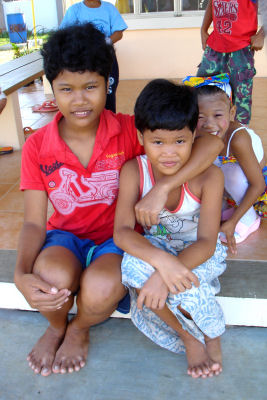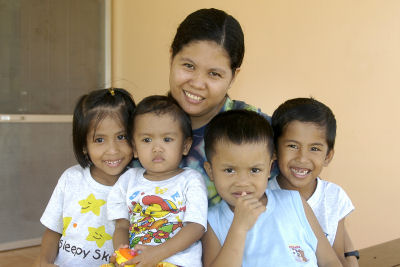Living on a dollar a day or less
20/06/2008

A third of the Philippines' 90 million inhabitants live on a dollar a day or less. Of this dollar, 60 cents are spent on food. As the world's largest importer of rice, the Philippines is among the countries most affected by the rising cost of basic food products.
According to a recent study by the Asian Development Bank (ADB), rice prices rose by 23 percent in the last year. In addition, fuel prices have also risen over the past year, as have the prices of power, water, and other basic commodities. The study suggests that with a 10 percent increase in the price of rice, approximately 660,000 Filipinos would fall below the poverty line. When taking into account the rising energy and utility prices, millions more Filipinos are seriously affected.
In January 2008, roughly two thirds of Filipinos had difficulty buying enough food. By April 2008, this had risen to three-quarters of Filipinos, as reported following a nationwide study by the IBON Foundation. Also, the study confirmed that the challenge of meeting the costs for children's schooling and medical care had become greater. As had transportation, water and electricity. In the worst cases, families are forced to make difficult choices between meeting the rising costs for food and covering school fees and health care, as stated by the ADB.
With the monsoon season approaching, a lower agricultural output is expected and a turn-around in the skyrocketing food prices is not expected any time soon.
Life in the SOS Children's villages

With food staples, most especially rice, becoming critical in supply, the seven SOS Children's Villages in the Philippines have undertaken some measures to cope by making their weekly grocery budgets stretch as far as possible. According to some SOS mothers, strict compliance to the weekly menu ensures the food consumed is within the planned budget.
Maricel, an SOS mother, explains that she cooks just enough rice for the members of the family, minimising leftovers. When leftover rice cannot be foreseen, she makes “champorado”, a native kind of porridge mixed with cocoa or chocolate. This dish is usually served during breakfast or snacks.
Rice substitutes have been introduced to the families' meals. In the SOS Children's Village in Cebu the children eat corn grits while in the SOS Children's Villages in Davao and Tacloban, oatmeal or steamed root crops are eaten for breakfast instead of rice.
Another alternative, used in SOS Children's Village Davao, is to mix rice that is subsided by the government, with a higher variety kind. This rice is much cheaper than the commercial rice. The technique is to buy sacks of subsidised rice, in bulk, and then mix it with commercial rice, bought in lesser quantity. The mixture then results to a tastier kind of rice rather than cooking subsidised rice only.
The gardens of the family houses are now are being utilised more effectively. For example, in SOS Children's Village Manila, the SOS mothers and their children plant root crops and common vegetables that are easy to grow such as onions, tomatoes, and eggplants. Instead of buying these important ingredients in dishes, they will just harvest from their garden. Expenses are minimised. Savings can then be used to buy other basic needs. Like in SOS Children's Village Davao, saved money is added to the rice budget.
Relevant Countries: Philippines.